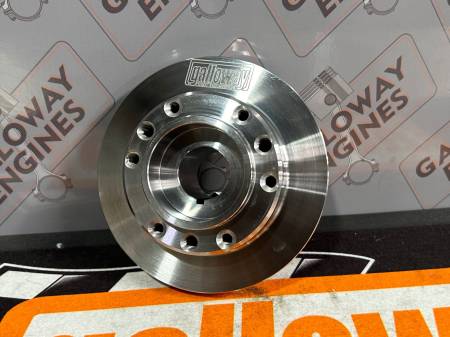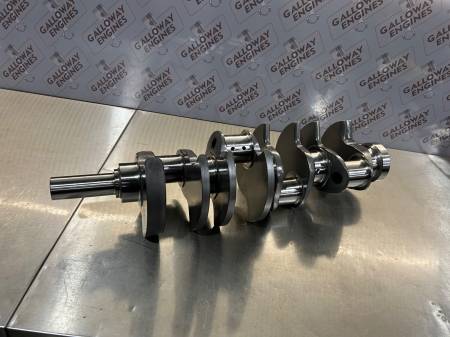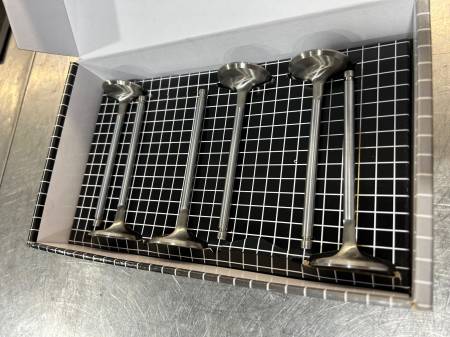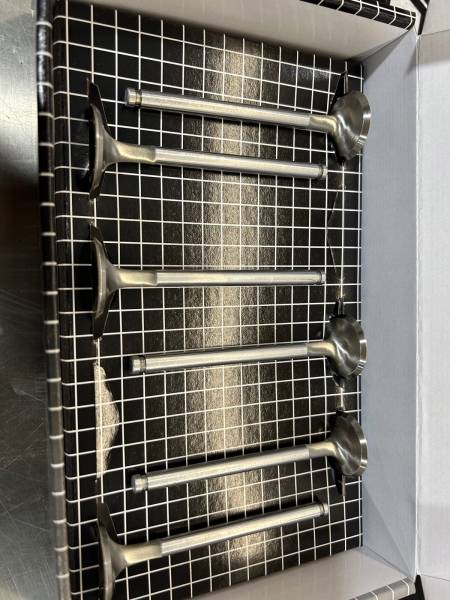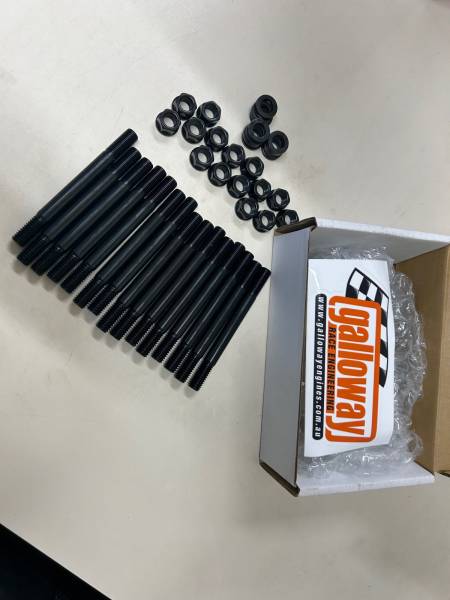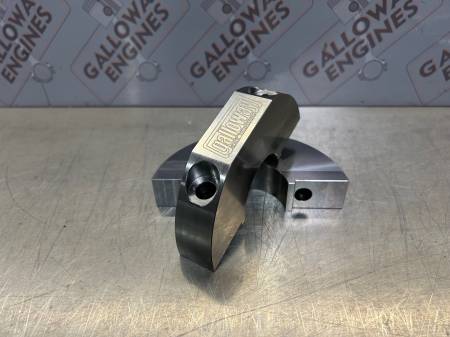Lifter Bore Modifications
With the purchase of the Rottler F67A CNC Machining Centre, Galloway Engines are able to offer a complete lifter bore correction, modification and sleeving service.
With the purchase of the Rottler F67A CNC Machining Centre, Galloway Engines are able to offer a complete lifter bore correction, modification and sleeving service.
What is the importance of lifters?
The lifter is a component which is associated with the valve train in an engine. Under the influence of the camshaft, the lifter controls the opening and closing of the valves which alters air flow into the cylinder. The operation of valve opening and closing, plays a vital role in the efficiency and performance of an engine. Ensuring all engine components operate effectively, ensures smooth running and increased reliability.
 |
|
| Fig 1. The operation of valves in relation to other engine components | Fig 2. The lifter runs along the surface of the cam and is lifted according to the lobe on the camshaft, thereby adjusting valve height. |
What is Lifter Bore Sleeving?
Lifter bore sleeving is often used in combination with other CNC block machining processes as part of a complete block blueprinting (for more information on engine blueprinting, click here to see our article). The Rottler F67A features a lifter bore blueprinting program where a CNC probe is used to locate lifter bore locations and machine lifter bores to the exact diameter, location and angle.
 |
 |
| Finished lifter bore sleeves in a Dart Alloy Ford block | |
Lifter bore corrections are common in Holden LS engines where damage to the lifter bores is often found. Damage to lifter bores can include scoring to the lifter bore and wear and tear, which can cause the lifter bore to be out-of-round. Single lifter bore corrections can be carried out to repair the damage in these instances. However, there are performance benefits to gain from correcting and/or modifying lifter bores.
What are the benefits of lifter bore modifications?
CNC engine blueprinting on a factory engine, where the precise design parameters for which an engine is designed are implemented, will increase engine performance and efficiency. Correctly aligning and positioning lifter bores, true to the camshaft centreline, can create smoother running and therefore increase horsepower. There is a fine tolerance between the camshaft lobe and the lifter. A lifter bore which is out of position may cause premature camshaft wear, lifter damage or even lifter failure. Lifter bore angle is extremely important. Cam timing will be out if the lifter is not correctly placed, which will deliver results untrue to the camshaft manfacturer claims.
 |
 |
|
| Fig 3. Correct position of the lifter in relation to the camshaft rotation | Fig 4. A lifter out of alignment with the camshaft may cause damage. In the middle image, the camshaft meets with the lifter incorrectly, causing side loading or even damage if the lifter meets with the side of the lifter, instead of the base. | |
 |
||
| Note the fine tolerance between the lifters and the camshaft in an engine. Ensuring that the lifter bore location, angle and position is precise, is of paramount importance. | ||
The bronze material used for lifter sleeves is extremely hard wearing and has high anti-seize properties. It is ideal for high performance applications where components are subjected to extreme operating conditions.
 |
The use of sleeves is additionally beneficial in high performance engines as the length of the sleeves can be extended to provide extra support to the lifter when using high lift camshafts. The sleeve protrudes into the camshaft tunnel which supports the lifter at low lift. With the extra support, more aggressive camshaft profiles can be used with increased reliability. | |
| The lifter bore sleeve protrudes into the cam tunnel for extra support for the lifter. |
Enlarging lifter bores is used in high performance engines to take advantage of greater performance reliability. High lift camshafts are used in high performance engines to achieve maximum lift (opens the valve greater), and maximum duration (holds valves open for longer), which leads to a faster rate of acceleration (see Fig 5 for the difference between low lift and high lift camshafts). Larger diameter lifters are better suited to high lift camshaft applications as the lobe matches with the lifter more precisely, which reduces side loading on the lifter (see Fig 6.).
 |
| Fig 5. The difference in low lift and high lift camshaft design. |
 |
|
Fig 6. The first example shows where the camshaft meets the lifter when a standard sized lifter is used. The second example uses a larger lifter. The camshaft meets the lifter further along from the edge which creates less side loading on the lifter. |
A larger lifter will handle the increased loads of a high performance situation as the larger lifter will utilise a larger roller with a bigger circumference, which leads to less revolutions of the roller. Chev engines have a standard lifter bore of .842" which is commonly upgraded to .904". This upgrade increases reliability of the lifter under more extreme conditions, when it is used with an aggressive camshaft.
Lifter bore sleeves can be used to control engine oil flow. In the example of a Holden V8 engine, there are large oil delivery holes in the lifter bores. Hydraulic camshafts typically do not require the quantity of oil these holes deliver. Other areas of the engine can be starved of oil if a large amount of oil is delivered to one area. At high RPM, a typical Holden V8 will deliver large quantities of oil to the rocker cover, therefore reducing the oil available in the sump and lowering oil pressure. With the installation of a sleeve, the oil delivery hole in the lifter sleeve can be drilled to a smaller size, so that oil flow is better managed.
Changing the lift height of the lifter, with the introduction of a high lift camshaft, can also lead to oil flow problems. The oil delivery hole in the lifter bore is often poorly located with an increase in lift, which allows excess oil to be released into the bore. With the introduction of a sleeve, the hole can be drilled and located in a better position to manage this issue.
Contact Galloway Engines to see how we can use the latest technology with the Rottler F67A CNC Machining Centre, to meet your lifter bore modification or other engine blueprinting needs.


